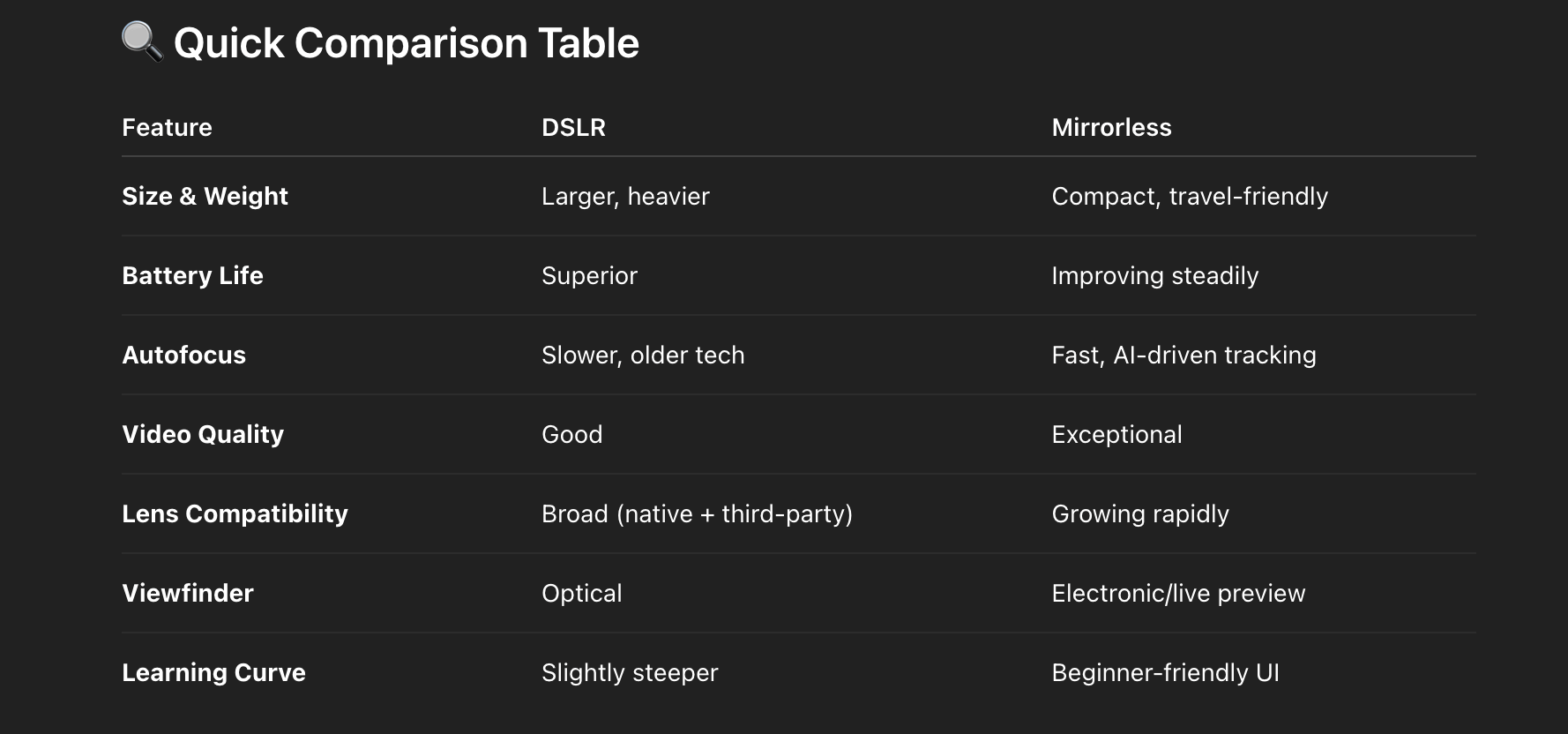May 16, 2025

In the ever-evolving world of photography, the debate between DSLR and mirrorless cameras continues to gain traction. With innovations in sensor technology, autofocus speed, and compact design, choosing the right system can directly influence the quality of your work, workflow, and potential income streams.
Let’s break it all down — from image quality and performance to usability and resale value.
At the heart of the difference lies the mirror system. DSLR (Digital Single-Lens Reflex) cameras use a mirror to reflect light from the lens into an optical viewfinder, while mirrorless cameras eliminate this mirror, allowing light to hit the sensor directly.
This shift makes mirrorless cameras more suitable for modern workflows, including cinematic wedding photography, where mobility, silent shooting, and responsiveness matter.
DSLRs still have an edge in battery life, often shooting over 1000 shots per charge, thanks to lower power consumption from optical viewfinders. Mirrorless cameras, while improving, tend to consume more power due to the EVF and LCD reliance.
For extended shoots — like full-day product sessions for online photo sales — this can be a key consideration.
Mirrorless systems have leapfrogged DSLRs in autofocus speed, using phase-detection and AI-driven subject tracking right on the sensor. Eye autofocus is now incredibly precise, even in motion-heavy settings like weddings or street photography.
This accuracy is crucial when capturing crisp shots for passive income platforms. Sharpness is essential if you're selling images on top photography websites, where even the slightest blur can reduce marketability.
Most modern photographers don’t just shoot stills — video is part of the package. Mirrorless cameras dominate here with:
Mirrorless systems offer smoother transitions and cleaner profiles for cinematic shots, ideal for hybrid shooters. If you're exploring dual-purpose cameras for creating content like artistic double exposures, mirrorless is hands-down the better tool.
If you're a travel, lifestyle, or portrait photographer, carrying a DSLR may start to feel like a chore. Mirrorless cameras offer compact bodies without compromising quality — making them perfect for spontaneous location shoots and on-the-go creators.
When comparing portability for beginners, top entry-level cameras increasingly lean mirrorless. Smaller setups help learners focus on mastering composition rather than struggling with bulk.
Consistency and image quality drive sales. Whether you’re capturing products, food, or lifestyle scenes for stock libraries, a tripod-mounted mirrorless camera can give sharper images faster with less post-processing needed.
If you're aiming to create assets for passive income photography, the speed and flexibility of mirrorless gear is more suited for high-volume workflows. That said, DSLRs still produce incredible images, especially for those already invested in lenses.
Photographers venturing into photo restoration or digitizing old albums need clarity and detail. Both camera types can deliver high-resolution results, but mirrorless options often support focus peaking and live zoom, helping you fine-tune restoration captures with ease.
When using software like photo restoration tools, mirrorless cameras reduce errors and rework time thanks to better live preview capabilities.

Both systems are capable, but mirrorless offers more agility for today’s fast-paced, digital-first photography demands.
Stay up to date with the newest tips, gear reviews, and step-by-step guides to elevate your photography journey from home and beyond.